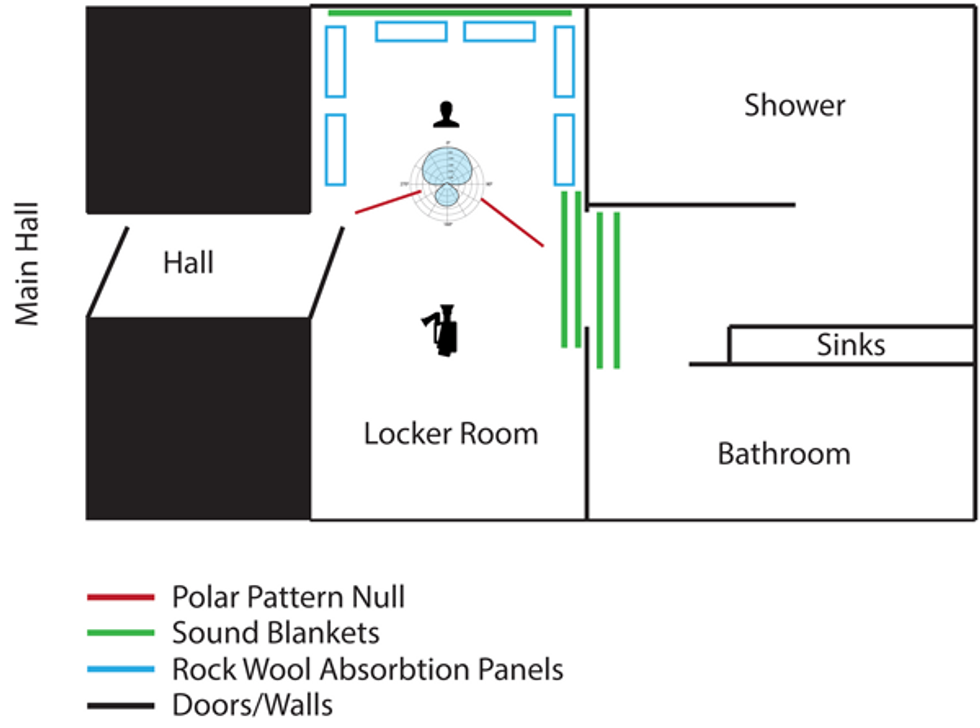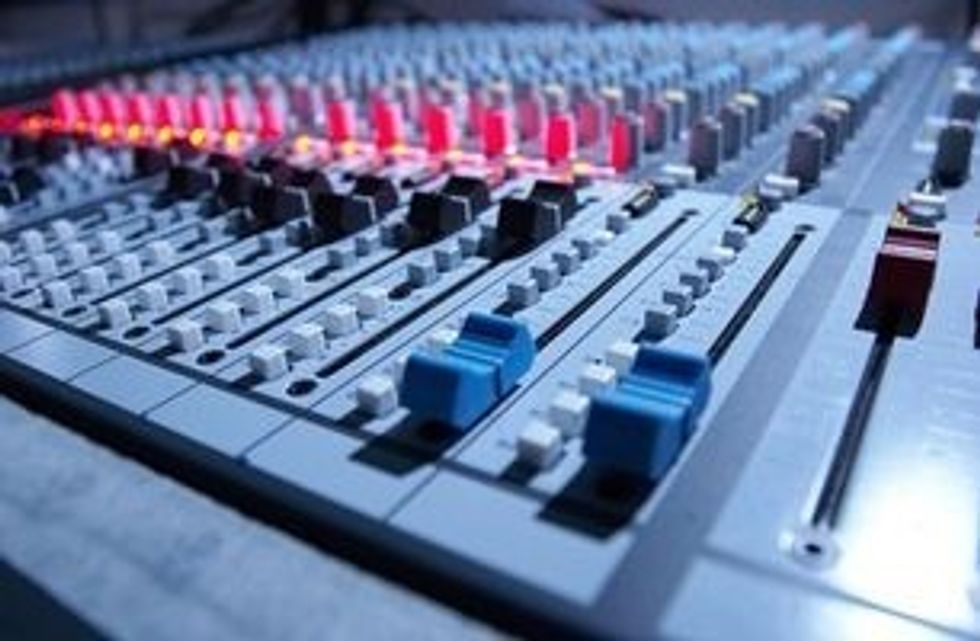Here's How to Record Quality Voice-Overs on Location
If you need to record voice-overs on set, here's a guide to show you how to do it.

Sometimes for productions, whether due to time restrictions or talent availability, it may be necessary to record studio-quality voice-overs on location in a less than ideal location. I had to record a voice-over with Lebron James for Nike's "Come Out of Nowhere" commercial and the room we had to work in was a locker room with showers. The flutter echos in there were nasty to say the least, but with a little acoustic treatment, careful room positioning, and mic choice, it ended up sounding phenomenal.
Transforming a location into a recording studio
If you have the luxury of choosing the room where you can record, start with choosing the largest, driest space you can find. Larger rooms tend to have less acoustic problems. With larger distances between walls, the phase of sounds start to come less into play and you have fewer issues with standing waves, comb filtering, and flutter echos. A lot of times, a great way to find a good recording space is to walk around and clap and listen for a place with the no flutter echos or excessive tail. Drop ceilings and carpet are usually a good place to start but the fewer parallel walls the better.
In the case of the Nike Commercial, the locker room had two sections. Both had parallel walls, but one section had carpet and a drop ceiling while the other had tiled walls and floor. Needless to say, it was better to set up in the first section. Production had provided black curtains and stands to hold them to cover all the walls and make it feel a bit less like a bathroom. The locker room also had two doors with a short hall between them which helped seal us off from the outside world well. The downside side to this room was that it was a narrow rectangle with close parallel walls. It sounded a bit boxy and you could hear a tail and slap of the showers only a doorway over.
We needed to tame this and use mic polar patterns to help downplay any acoustic problems. Fortunately the best place for sound was also the best place for the camera that would be shooting some interviews. We set up with James about a third of the way into the room facing longways. Using four layers of sound blankets and squeeze clamps we made a barrier between the interview room and the nasty high frequency tail of the showers.
Working at Bad Racket, a Cleveland Recording Studio, I brought a six of our rock wool filled absorption panels. Placing them behind and on either side of where we were recording and supplemented those with a few additional sound blankets.
One thing that was less than ideal was the air conditioning vent directly above my microphone. We had locations look into getting it shut off, which I would recommend doing so several hours before it’s time to record. In some larger buildings you may shut it off but it may take a couple hours to actually fully come to a rest.
Microphone choice
For the voiceover recording I used a Sennheiser MKH-50. It has great proximity effect, which makes for a rich and intimate sounding voice-over, as well as smooth highs, and a super cardioid pickup pattern.
This polar pattern helps it reject well. Small diaphragm condenser mics also have exceptional transient response and off-axis coloration, yielding extremely precise sounding recordings. To get that nice proximity effect that makes people sound larger than life, being right up on the mic is essential. I’d recommend about 6” from the capsule. This keeps it full without getting out of control. Every mic has a different sweet spot. Having something to act as a pop filter is also essential. In my case I used a Movo windscreen.
Choosing a recorder
With any location recording where you don’t have the controlled environment, it's important to eliminate any extra noise. Especially if the voice actor is speaking at lower volumes for the lines.
What will also help you is having a recorder with good preamps that have low noise floor. This will allow your recordings to sound the cleanest. I own a Sound Devices 664, which has very clean and transparent mic preamplifiers with extremely low noise, built in limiters, and more. There are other options out there from Zoom, Zaxcom, and Tascam who offer similar options.
Room Tone & Mixing
Though I wasn’t the one who mixed Come Out of Nowhere, let's talk briefly about mixing.
Standard practice is to record room tone on location. Doing so allows post to use tools like iZotope RX to learn the frequency range of the noise in order to reduce it, remove it, or add the sound in if necessary. If the dialogue is captured well on location, then a fairly minimal hand should be needed to mix it. On most dialogue, a subtle low mid range cut can open up the vocal sound, a slight lift above 12k can give it a little air, and a touch or compression to even out the volume of the dialog.
Do you have any tips on recording voice overs on location? Let us know in the comments below.
Editor's Note: This story first appeared on Rapp's website https://henrirapp.com and was edited for clarity.















